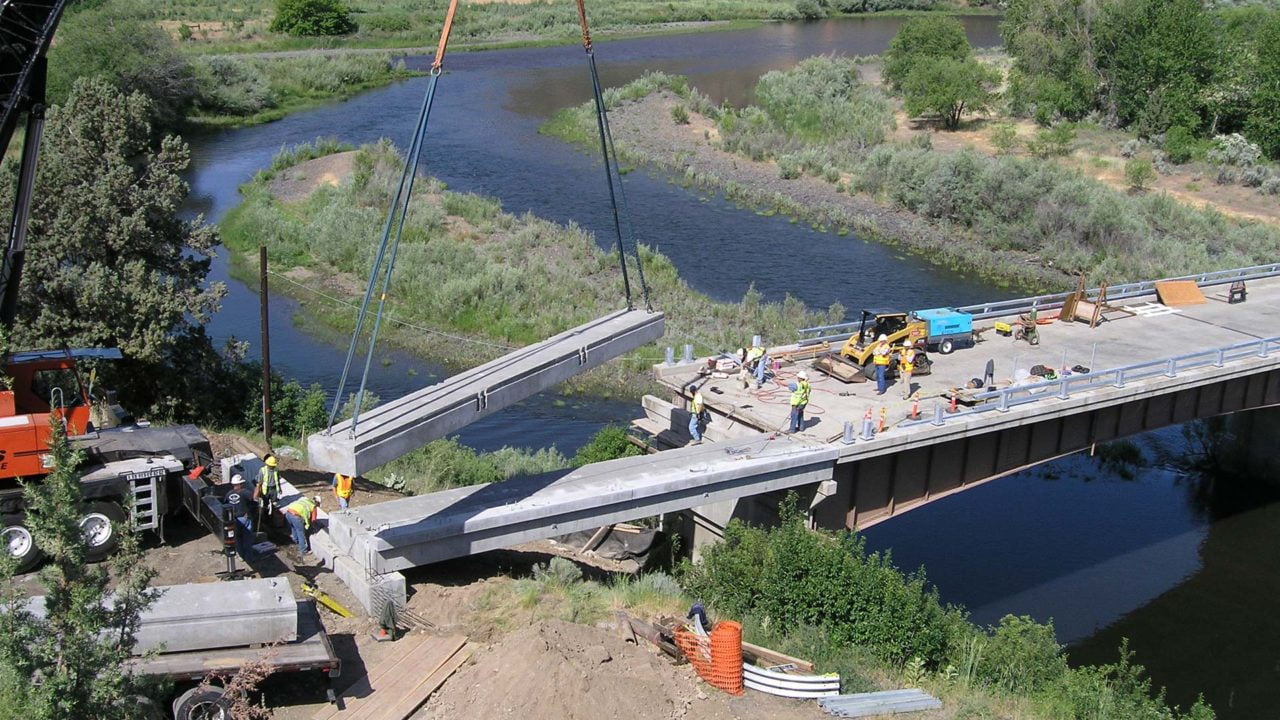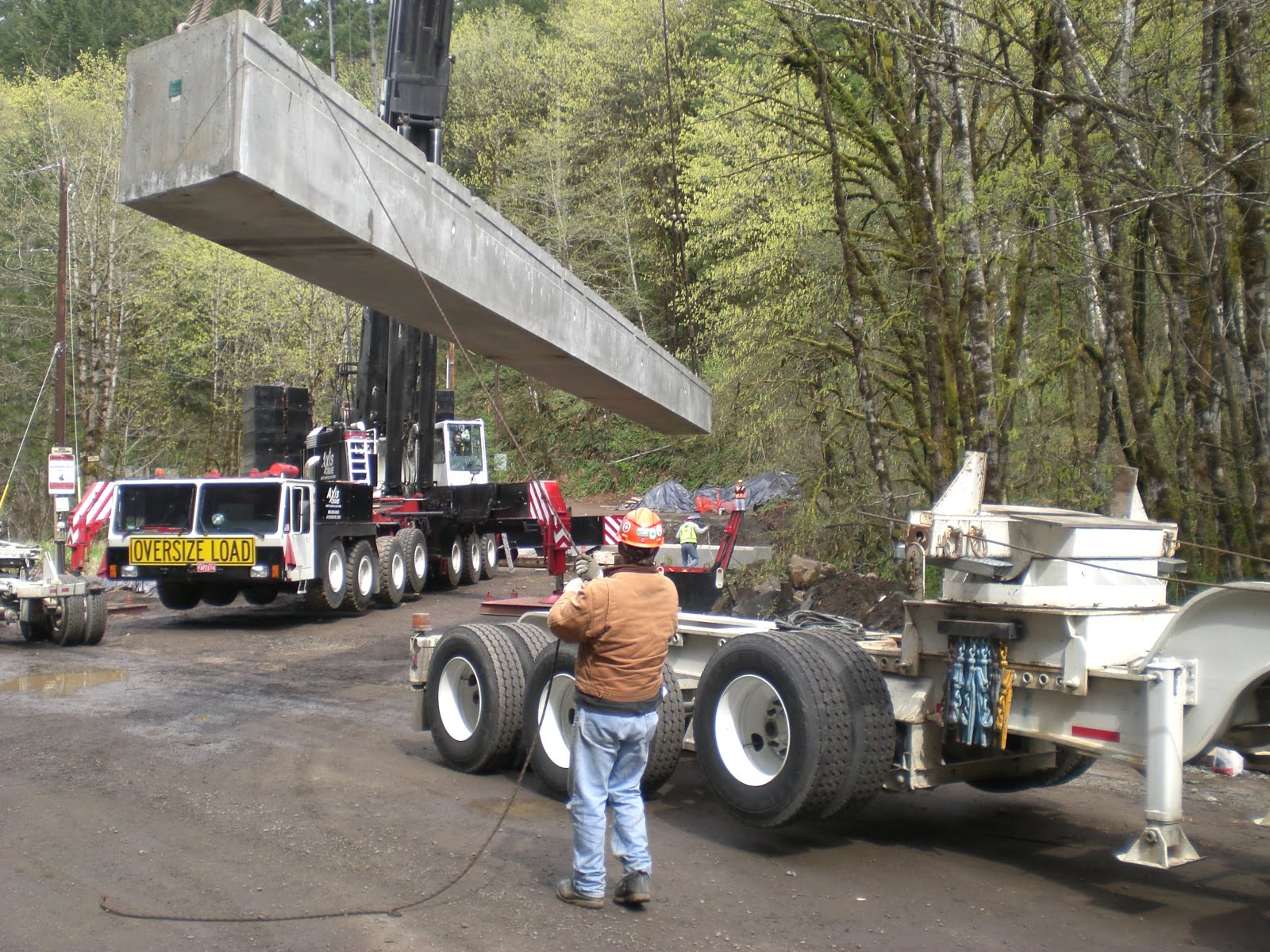3D Viewer
3D Viewer Tools
- 3D Viewer Functions:
- Move, Span, Zoom Assemblies
- Isolate Single Components in View
- Explode Assembly Single Components
- Use Markup to Sketch Details
- General Measurements for Concept
- Print Views
Box Beams are typically used for 80′-118′ bridge spans. The design allows for a typical 4′ width section to include integral voids which reduce the product weight and are often used when box depth and speed of construction are part of the design criteria. Placed side by side at the jobsite, these sections are bolted or welded together, the shear key between the sections is grouted and then can be ready for traffic or an overlay.
| Product Name | Depth (in) | Area (in2) | Yb (in4) | Ixx (in4) | Iyy (in4) | PLF @ 165 |
|---|---|---|---|---|---|---|
| BOX33 | 33" | 766 | 16.3 | 110483 | 203409 | 880 |
| BOX39 | 39" | 826 | 19.3 | 168706 | 231700 | 949 |
| BOX42 | 42" | 856 | 20.8 | 202877 | 243809 | 983 |
| BOX48 | 48" | 916 | 23 | 283292 | 271669 | 1052 |
Standard box beam design is typically governed by the State, County or Agency design criteria. In the Pacific Northwest using a nominal 4′ wide box beam at depths of 33″, 39″, 42″ and 48″ provides the most cost effective use of the section.








Have a question, need a budget or detailed schedule? Knife River sales team is ready to discuss precast solutions for your project. Reach out to our staff below :

Andy Roberts
Outside Sales, ID & MT

Nikolaus Mixon
Outside Sales, OR

Alex Sari
Outside Sales, WA
AASHTO sections are typically used for railroad, or other private entity, bridge construction when a standard wide flange (WF) girder section does not meet the project design criteria. The top flange of AASHTO shaped girders is not as wide as standa...
View Product
Accelerated Bridge Construction utilizes precast bridge substructure products. Total precast abutments, bent caps, pile caps and wingwalls offer many advantages. They can be precast to precise specifications of the design in a plant controlled settin...
View Product
The Bulb I (BI51, BI63 and BI75) is a less commonly used ODOT standard girder for medium to long length span bridges. It utilizes the BT section with the deck blocked in to achieve difficult site requirements such as heavy super elevations and vertic...
View Product
The Oregon Bulb-Tee (BT) girder is the preferred choice for most Oregon medium to long span bridges requiring a CIP deck. Bulb Tee precast/prestressed girders are typically used in spans from 60-185′ with significant loading.
View Product
Deck Bulb Tee Girders combine a precast deck with the traditional I-Girder design. This design offers the advantage of an immediate driving surface, or alternatively, a roughened surface that allows for the addition of a secondary overlay or a Cast-I...
View Product
Tri-Deck girders are an adjustable top flange width, multi-stemmed unit designed for full deck use. Tri-Deck bridges are typically used for bridge spans from 30′-52′ which require a longer span and lower profile section. Typically Tri-Dec...
View Product
Voided Slabs are typically used for 15-85′ bridge spans but can be used in building applications where significant design loads are required. Voided slab design allows for a typical 4′ width slab to include integral voids which reduce the...
View Product
The wide flange (WF) girder is the primary bridge girder section used by Washington State Department of Transportation (WSDOT) and Idaho Transportation Department (ITD). WF Girders are typically used in spans of 70-200’ using sections ranging from 36...
View Product